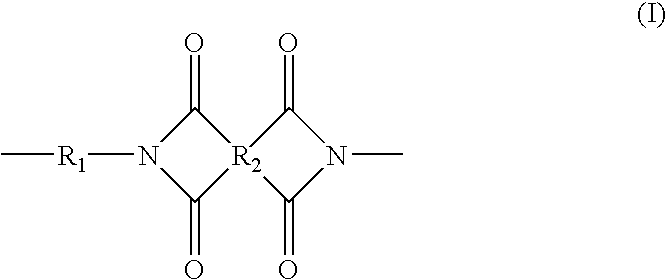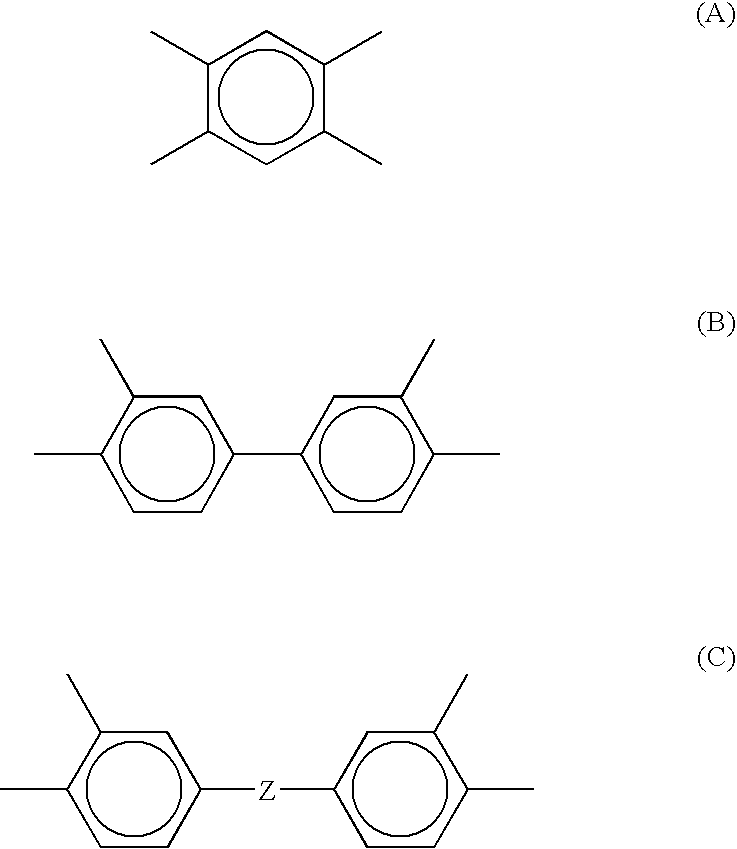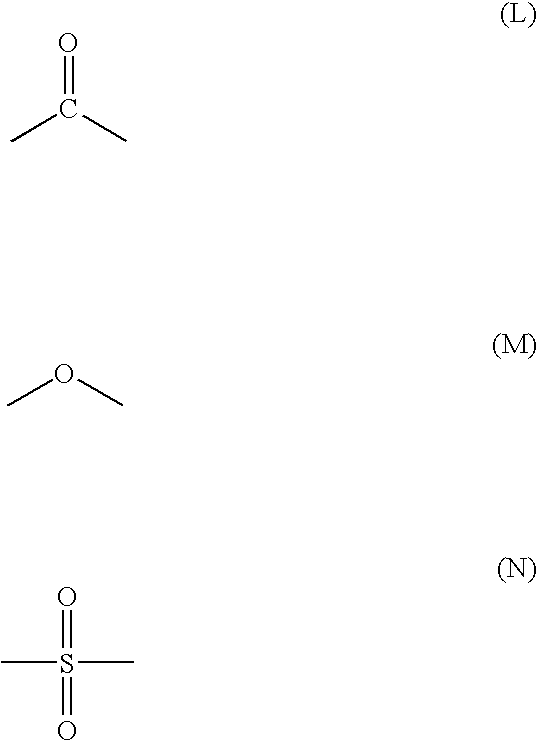Method for separating hydrocarbon-containing gas mixtures using hydrocarbon-resistant membranes
a technology of hydrocarbon-resistant membranes and hydrocarbon-containing gas mixtures, which is applied in the direction of gaseous mixture working up, separation processes, organic chemistry, etc., can solve the problems of reversible or irreversible reduction in flux and/or permselectivity, loss of membrane performance, and large waste of fuel gas
- Summary
- Abstract
- Description
- Claims
- Application Information
AI Technical Summary
Benefits of technology
Problems solved by technology
Method used
Image
Examples
example 1a
[0104]An asymmetric hollow-fiber membrane of P84 was spun from a solution of 30% P84, 9.0%. Tetramethylene sulfone and 1.5% acetic anhydride in N-methylpyrrolidinone (NMP) with methods and equipment as described in U.S. Pat. Nos. 5,034,024 and 5,015,270. The nascent filament was extruded at a rate of 180 cm3 / hr through a spinneret with fiber channel dimensions of outer diameter 559 μm, and inner diameter equal to 254 μm at 75° C. A fluid containing 85% NMP in water was injected into the bore of the fiber at a rate of 33 cm3 / hr. The nascent fiber traveled through an air gap of 5 cm at room temperature into a water coagulant bath at 24° C. and the fiber was wound up at a rate of 52 m / min.
[0105]The water-wet fiber was washed with running water at 50° C. for about 12 hrs to remove residual solvent and then sequentially exchanged with methanol and hexane as taught in U.S. Pat. Nos. 4,080,744 and 4,120,098, followed by vacuum drying at room temperature for 30 minutes and then at 100° C. f...
example 1b
[0108]An asymmetric hollow-fiber membrane of P84 was spun and formed into modules by the same procedure as Example 1a except that it was spun from a solution of 32% P84, 9.6%. Tetramethylene sulfone and 1.6% acetic anhydride in N-methylpyrrolidinone (NMP) into a water coagulant bath at 8° C.
[0109]The membrane performance was tested in the same manner as described for Example 1a. The average performance of two P84 based Example 1b permeators was 19.8 GPU carbon dioxide permeance, and carbon dioxide / nitrogen selectivity 16.0.
example 1c
[0110]An asymmetric hollow-fiber membrane of P84 was spun and formed into modules by the same procedure as Example 1b except that it was spun from a solution of 33% P84, 9.9% tetramethylene sulfone and 1.65% acetic anhydride in N-methylpyrrolidinone (NMP) using a spinneret at 96° C. and through an air gap of 5 cm.
[0111]The membrane performance was tested in the same manner as described for Example 1a. The average performance of two P84 based Example 1c permeators was 16.0 GPU carbon dioxide permeance, and carbon dioxide / nitrogen selectivity 18.7.
PUM
| Property | Measurement | Unit |
|---|---|---|
| pressure | aaaaa | aaaaa |
| pressure | aaaaa | aaaaa |
| pressure | aaaaa | aaaaa |
Abstract
Description
Claims
Application Information
 Login to View More
Login to View More - R&D
- Intellectual Property
- Life Sciences
- Materials
- Tech Scout
- Unparalleled Data Quality
- Higher Quality Content
- 60% Fewer Hallucinations
Browse by: Latest US Patents, China's latest patents, Technical Efficacy Thesaurus, Application Domain, Technology Topic, Popular Technical Reports.
© 2025 PatSnap. All rights reserved.Legal|Privacy policy|Modern Slavery Act Transparency Statement|Sitemap|About US| Contact US: help@patsnap.com



